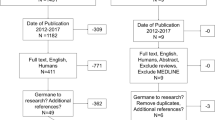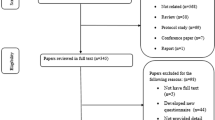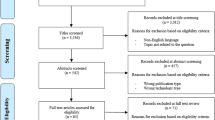Abstract
This paper describes a case study in which mobile computers were used by a UK National Health Service (NHS) Trust. The intention was to give clinicians access to up-to-date patient data, enabling them to be more clinically effective in their jobs. Since the majority of their work was performed in the community, it was perceived that the use of hand-held computers would give the flexibility needed to allow this clinical effectiveness to occur. This paper will attempt to demonstrate what happened in reality and point to various factors that had not been considered prior to the introduction of the system. Had these factors been considered, a different system would have been designed with a better fit between the organisation, the needs of the user and their work environment.
Similar content being viewed by others
References
Department of Health. Getting better with information: an IM&T strategy for the NHS in England. HMSO, London, 1992
Department of Health. Information for health. HMSO, London, 1998
Department of Health. The new NHS. Government White Paper, HMSO, London, 1997
Department of Health. Promoting better health. Government White Paper on Primary Care, HMSO, London, 1987
Department of Health. General practice in the National Health Service. The 1990 contract. HMSO, London, 1989
Department of Health, Computing Survey 1996, HMSO London 1997
McManus B. A move to Electronic Patient Records in the Community: A qualitative case study of a clinical data collection system, problems caused by inattention to users and human error. Topics in Health Information Management 2000; 20: 23–37
Robertson SI, Calder J, Fung P, et al. Pupils, teachers and palmtop computers. Journal of Computer Assisted Learning 1996; 12: 194–204
Marmaras N, Lyritzis K. ‘Keyboard layout for occasional users’. Interactive technologies and techniques: input. Proceedings of IFIP Interact '90. Human-Computer Interaction 1990; 707–712
Sears A, Revis D, Swatski J, et al. Investigating touchscreen typing: the effect of keyboard size on typing speed. Behaviour and Information Technology 1993; 12: 17–22
Mackenzie IS, Zhang SX, Soukoreff RW. Text entry using soft keyboards. Behaviour and Information Technology 1999; 18: 235–244
Kristoffersen S, Ljungberg F. Your mobile computer is a stationary computer ACM Workshop on Handheld CSCW, CSCW '98, Seattle, Washington, USA, 1998, http://www.teco.edu/hcscw/110.Ljungberg/cscw.html
Page C. ACM Workshop on Handheld CSCW, CSCW '98, Seattle, Washington, USA, 1998, http:// www.teco.edu/hcscw/sub/119.Page/index.html
Johnson C. First Workshop on Human Computer Interaction with Mobile Devices, 21–23 May 1998, http:/ /www.dcs.gla.ac.uk/~johnson/papers/mobile/
Author information
Authors and Affiliations
Corresponding author
Rights and permissions
About this article
Cite this article
McManus, B. Mobile computers in a community NHS trust: Is this a relevant context and environment for their use?. Personal Technologies 4, 96–101 (2000). https://doi.org/10.1007/BF01324116
Issue Date:
DOI: https://doi.org/10.1007/BF01324116




